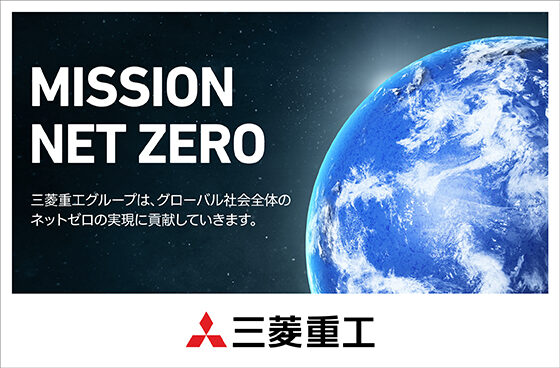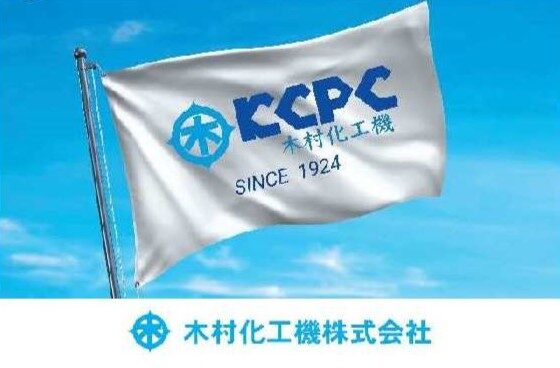Devoting His Life to Dealing with the Fukushima Daiichi Accident
– Would you tell us your connection to the accident?
Okamoto: I was a professor at the University of Tokyo at the time of the accident, consulting on safety measures at various councils, including the Nuclear Safety Commission (NSC) of Japan. On March 11, 2011, when the giant earthquake (officially known as the Great East Japan Earthquake) struck, I happened to be overseas on a business trip, attending an editorial board meeting for an international journal in the UK. The following day, I traveled to Germany, where I saw a video clip of a hydrogen explosion at the Fukushima Daiichi Nuclear Power Plants. I then rushed back Japan, as the video had shocked me so much that I determined then and there to devote the rest of my life to dealing with the accident. Right now, I spend about 60 percent of my time on research and teaching at the University of Tokyo, on nuclear safety and advanced reactors, and the other 40 percent on technological research at the Japan Atomic Energy Agency (JAEA) on decommissioning Fukushima Daiichi. The nuclear accident at Fukushima Daiichi thus continues to shape my life.
– Could the accident have been avoided at the Fukushima Daiichi, which was struck by a tsunami?
Okamoto: Emergency diesel generators at the plant were knocked out by the tsunami, causing all power sources to be lost, resulting in a situation in which no response measures could be implemented. When I heard about the loss of all the power sources, I steeled myself for the eventuality that damage would eventually reach the containment vessels, as it actually turned out doing.
Destruction of the reactor buildings was due to the hydrogen explosions — whose magnitude had not even been imagined. Although the explosions had an insignificant effect on the reactors, the videos had a major effect on society. Also, the areas around the explosions were disrupted, complicating recovery work.
The tsunami damage, too, was greater than expected. I have visited Fukushima Daiichi dozens of times since the accident, and whenever I go there, I see the quiet, beautiful Pacific Ocean, and feel sad. As I look out onto the sea, it is impossible for me to conceive that a massive tsunami had come from it.
On the other hand, in one respect, the damage was less significant than it might have been, in terms of the diffusion of radioactive materials from the plant. Although three reactors had been damaged in the accident, the design of the containment vessels was robust enough that radioactive materials did not escape externally as much as at the Chernobyl Nuclear Accident in the former Soviet Union. Moreover, when the accident occurred at Fukushima Daiichi, the wind was blowing from the land out to the sea, meaning that most of the radioactive materials went seaward, resulting in limited contamination on land. I understand that nobody — neither workers nor residents — suffered health problems due to radioactive materials emitted by the accident.
There are a lot of “if only’s,” but there is no use crying over spilt milk. The cause of the accident has been ascertained. By analyzing what we know, the safety of existing reactors will be improved, allowing for the development of safe, advanced reactors in the future.

– Was a “myth of safety” among nuclear parties partially responsible for the insufficient safety measures at Fukushima Daiichi? And why was there so much confusion after the accident?
Okamoto: There may have been a safety myth, and it is true that Japan was behind in safety measures. At Fukushima Daiichi, preliminary actions were clearly inadequate. There were so many things that happened there which even I had never expected, so I have had to reflect on my own failure.
Nuclear parties around the world recognize that accidents do happen, and that efforts on safety measures must be sustained; that was my thought at the time, and it still is. Delving deeper, and based on lessons learned from the Three Mile Island (TMI) accident of 1979, the United States and Europe added the assumption of a severe accident due to the loss of all power sources, along with the concept of “multiple protection” (independent response measures not affected by each other), to their nuclear safety measures.
In 1992, in Japan, too, NSC issued guidelines on severe accident measures, based on which it would have started discussions on regulating severe accident measures in March 2011, the very month that the accident happened. I do not know whether the accident could have been avoided if those discussions had been held. Yet, I regret that they had not been started earlier. Looking back on the discussions on safety measures at that time, when I presented examples from overseas and argued that nuclear regulation in Japan should be improved, some insisted that Japanese measures were working well enough, and questioned why they needed to be changed. Generally, attitudes toward change were negative at the time.
There was quite terrible confusion after the Fukushima Daiichi accident, and the national government failed to actively release information. At one press conference, a public-relations officer at the Nuclear & Industrial Safety Agency (NISA) told what had really happened — that core meltdowns had occurred — and was summarily removed from his position. Confusion notwithstanding, the government did not even consider the views of us experts and specialists. A scholar who is my senior, and who was involved in the accident response, was isolated in the bureaucratic system, and was blamed.
Politicians intervened, and their careless remarks and performances agitated society further. It is regrettable that then Prime Minister Naoto Kan was himself guilty in that respect. Which is to say, the top officials at that time were, to a certain extent, part of the problem. Today, as the coronavirus continues to spread, while not a comparable situation to Fukushima, it is unfortunate that not enough use is being made of experts, causing public confusion as a result.
Dealing Responsibly with Nuclear Power
– What will happen If nuclear power remains underutilized in Japan?

Okamoto: Electricity may no longer be readily available in the country, which of course would adversely affect industry and employment in the future. Unnoticed, a crisis is quietly building. Electricity is delivered now in Japan without relying on nuclear power, but at extra cost. If that situation persists, power companies here may cease providing nuclear power at all. Electricity costs for other industries would increase, leading potentially to economic stagnation. I do not think, however, that Japan will be able to do without nuclear power in the future, and the time may come when it has no choice but to buy foreign-made nuclear reactors using advanced technology.
Additionally, the world is facing the challenge of climate change. In his policy address of October 2020, Prime Minister Yoshihide Suga presented Japan’s target of achieving net zero greenhouse gas emissions by 2050. To realize that, nuclear power, which emits no CO2 in the generation process, will be necessary, but the government has not come out with a policy to use it proactively.
No matter whether a situation involves engineering, societal, or ordinary daily issues, the rational resolution of any problem is to compare the expected benefits and risks of a certain action. While nuclear power bears the risk of an accident happening, it also offers the benefit of generating electric power in large quantities. The benefits should be enjoyed by weighing them against the corresponding risks. Instead, Japan, seeking “zero risk,” takes the inexplicable step of suspending nuclear power plants altogether.
The Japanese government appears to be putting off its decision on building new nuclear plants and creating a system for doing so. Being “anti-nuclear” is a popular sentiment among the public, and political activists have been raising a fuss over such plants. Some mass media in this country accommodates such public opinion and often disseminates ridiculous information as well. No party appears to be thinking about the consequences of its acts.
In any country, societal issues can take strange turns, and nuclear power lends itself to that. But from talking with scholars in other countries, I think that Japan finds itself in a particularly bad situation. That must change.

– What should be changed?
Okamoto: We probably ought to do a better job in presenting the idea that nuclear power is useful to the public. It was the Fukushima Daiichi accident that amplified distrust in nuclear power. Steady progress in dealing with the accident at Fukushima Daiichi must be made so as to remove people’s anxiety. Nuclear-related parties must do their jobs in all their various positions, but it is the political realm that can put an end to the strange chain of events.
I give high marks to what former Prime Minister Yoshihiko Noda (2011-12) did on nuclear power. Back in June 2012, his government officially decided to restart the Ohi-3 and -4 NPPs, owned by the Kansai Electric Power Co., and they resumed operation just one month later. At that time, the prime minister held a press conference, at which he said that he had weighed the risk of operating the NPPs against that of power failures in the summer due to shortages of electricity if NPPs were not operated, and decided to restart them in order to avoid the risk of such power failures. Many people were persuaded by his reasoning, and objections were limited. The prime minister at the time thus demonstrated the risks and clarified the decision-making process, which was, I am sure, one reason that he could get understanding.
I do not think that blatantly political actions alone can resolve all issues, but they can have positive effects. The current LDP administration under Prime Minister Suga is conspicuously putting off decisions on various nuclear issues, but I hope that it will be resolute like the former Prime Minister Noda vis-à-vis the positive use of nuclear power.
Overseas Development of Nuclear Boilers and Advanced Nuclear Reactors

– Can nuclear power continue to deliver benefits to society?
Okamoto: I think that nuclear power still has great potential. Reforms can come from extending existing technology without needing major technological innovation.
One idea, for example, is nuclear boilers. In most countries, around one-third of all energy is used to generate industrial heat and steam, using such fossil fuels as coal in many cases. However, it is becoming increasingly harder to use coal because of air pollution and global warming, so the idea is to generate heat by nuclear power. In concept, the heat will be created by use of high-temperature gas-cooled, 100MW-class small reactors and provided to industrial complexes. Poland is interested in that. A plan is being developed whereby Japan would offer the technology of JAEA and others, and the University of Tokyo and I would cooperate.
Meanwhile, Japan’s unique fast breeder reactor (FBR) technology can generate power while producing plutonium that can be used as fuel that will generate still more power. Freedom from energy-related anxiety — a mantra at the time Japan’s FBR was constructed four decades ago — is as valid a goal today as it was then. I expect research in the field to make more progress as time progresses.
The United States and Canada both have national policies to develop small modular reactors (SMRs), which are advanced. In Japan, manufacturers and universities have technology in the field, and could make great contributions.
In technologically advanced countries, the construction of nuclear power plants has slowed, while developing countries have many plans to construct them. Nuclear power continues to be needed to respond to power demand driven by economic growth in developing countries, and to generate power without emitting CO2. Global energy issues cannot be resolved by renewable energy alone, so there are many reasons to be optimistic about nuclear power.
– Where does the decommissioning at Fukushima Daiichi stand now?
Okamoto: One of the targets of the decommissioning roadmap prepared by the central government is to start removing small pieces of fuel debris from the complex by the end of 2021. There has been steady progress to that end, with the debris being swiftly removed to make the Fukushima Daiichi NPPs safe again.
A major issue at the moment is that precise conditions — including what the melted fuel debris looks like — are unknown. Radiation levels are so high in the reactor buildings that people cannot go near, so investigations of the fuel debris continue via robots.
Globally, there have been few nuclear accidents on the order of Fukushima Daiichi, so experts and others around the world are watching the decommissioning and research there, with state-of-the-art technologies being integrated and applied. People involved in the project are working with a sense of mission: namely, to reconstruct Fukushima. Their efforts are popular among students and researchers, who are keenly interested in them.
Sharing the responsibility of those involved in nuclear power, I want to see Fukushima Daiichi NPPs decommissioned safely, and to have Fukushima fully reconstructed.
– The Japanese nuclear industry finds itself in a difficult situation, owing to domestic resistance to constructing new NPPs and scant orders from overseas.
Okamoto: I agree that the industry finds itself in difficulty. Because I used to work as a reactor engineer at a manufacturer before joining the University of Tokyo faculty, I would like to see the industry rebound somehow. I want to see it continue as it would thus accumulate experience and prepare for the future, even in the current circumstances.
In the United States, the nuclear industry was also forced into a difficult position after the TMI accident of 1979. In the 1980’s, however, Westinghouse developed the AP600, a safe, high-performance reactor. Today, the advanced AP1000 is being built in the United States and China. Westinghouse’s foresight in committing to technological innovation while it was still in deep water should be recognized and appreciated.
I want firms in the Japanese nuclear industry to similarly take up the challenge of advanced reactors and technology. Nuclear power will continue to be needed in Japan well into the future, and demand for nuclear power exists internationally. Japanese technology will still be employed in the construction of nuclear reactors overseas. When domestic Japanese nuclear policy returns to normal, such technology can be re-imported back to Japan.
For example, attention in many countries is being drawn to the Hitachi GE Group’s Economic Simplified Boiling Water Reactor (ESBWR), the Toshiba 4S (super safe, small, and simple) micro nuclear reactor design, and JAEA’s high-temperature gas-cooled reactors (HTGCRs) and fast breeder reactor (FBR). I think that providing Japan’s original technology to the world can be the “way out” for the Japanese nuclear industry from its present difficulties, and I am sure that it will take it.
Nuclear power has clear appeal and potential. The University of Tokyo and JAEA receive many inquiries from people who want to study there, along with requests for joint research. Nuclear researchers have an international network, and their activities are carried out with high hopes for the future.
A decade has elapsed since the accident in Fukushima. Based on reflections on the accident, and making use of what has been learned from it, let us continue to progress in the development of new nuclear power and toward the reconstruction of Fukushima. The strengths and talents of organizations and individuals in Japan are a powerful resource.







